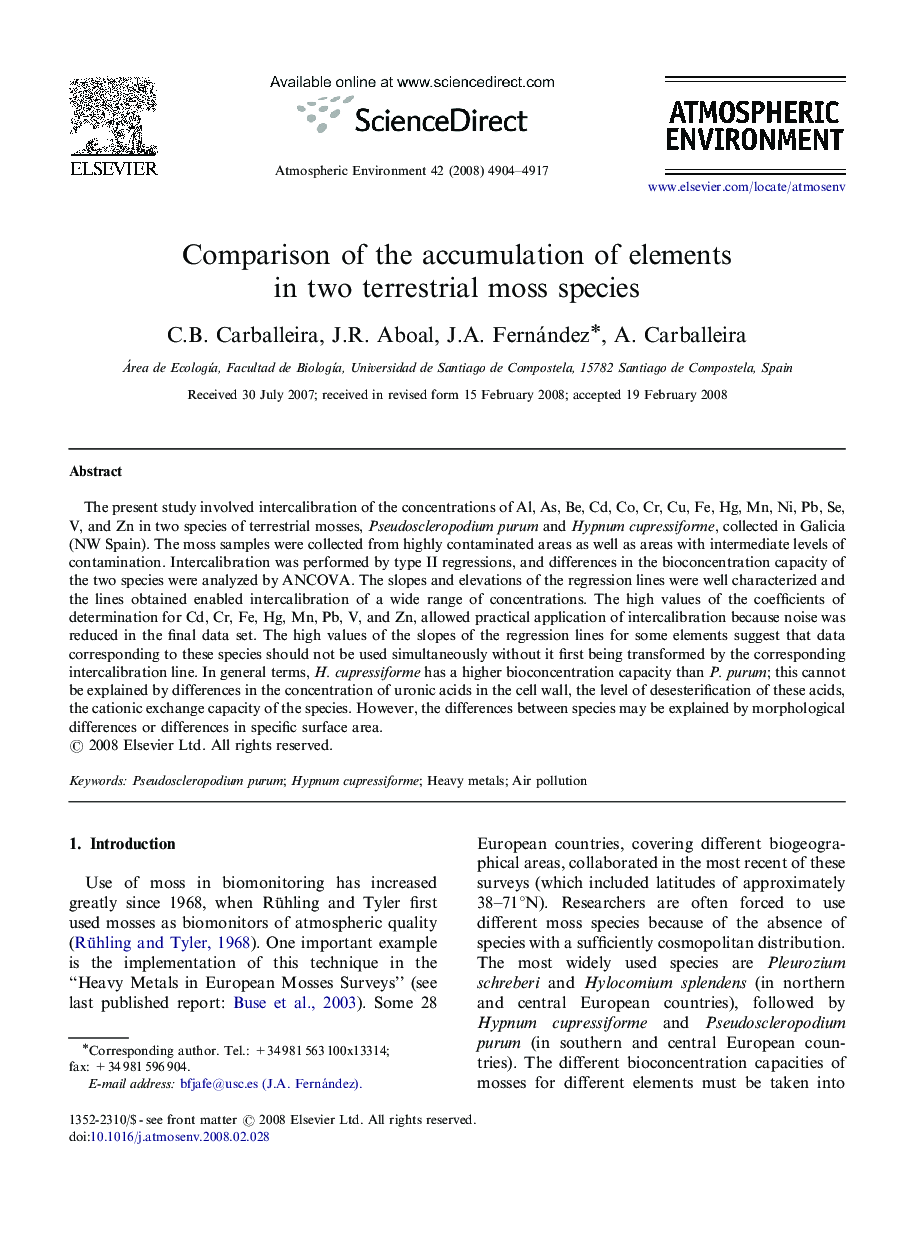| Article ID | Journal | Published Year | Pages | File Type |
|---|---|---|---|---|
| 4442252 | Atmospheric Environment | 2008 | 14 Pages |
The present study involved intercalibration of the concentrations of Al, As, Be, Cd, Co, Cr, Cu, Fe, Hg, Mn, Ni, Pb, Se, V, and Zn in two species of terrestrial mosses, Pseudoscleropodium purum and Hypnum cupressiforme, collected in Galicia (NW Spain). The moss samples were collected from highly contaminated areas as well as areas with intermediate levels of contamination. Intercalibration was performed by type II regressions, and differences in the bioconcentration capacity of the two species were analyzed by ANCOVA. The slopes and elevations of the regression lines were well characterized and the lines obtained enabled intercalibration of a wide range of concentrations. The high values of the coefficients of determination for Cd, Cr, Fe, Hg, Mn, Pb, V, and Zn, allowed practical application of intercalibration because noise was reduced in the final data set. The high values of the slopes of the regression lines for some elements suggest that data corresponding to these species should not be used simultaneously without it first being transformed by the corresponding intercalibration line. In general terms, H. cupressiforme has a higher bioconcentration capacity than P. purum; this cannot be explained by differences in the concentration of uronic acids in the cell wall, the level of desesterification of these acids, the cationic exchange capacity of the species. However, the differences between species may be explained by morphological differences or differences in specific surface area.
